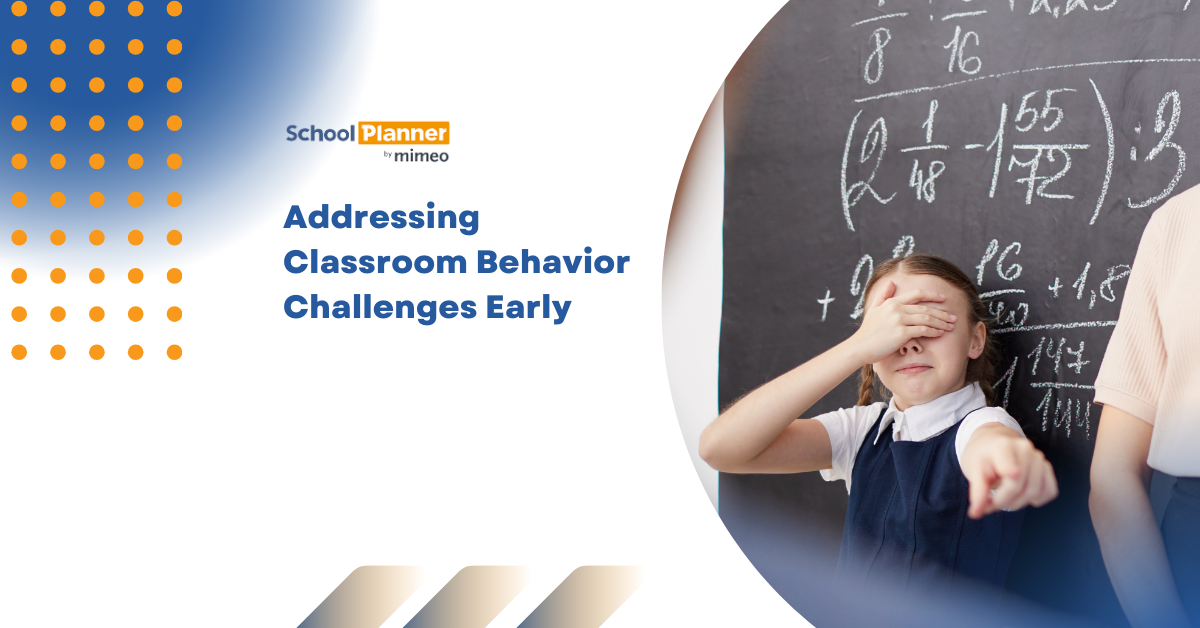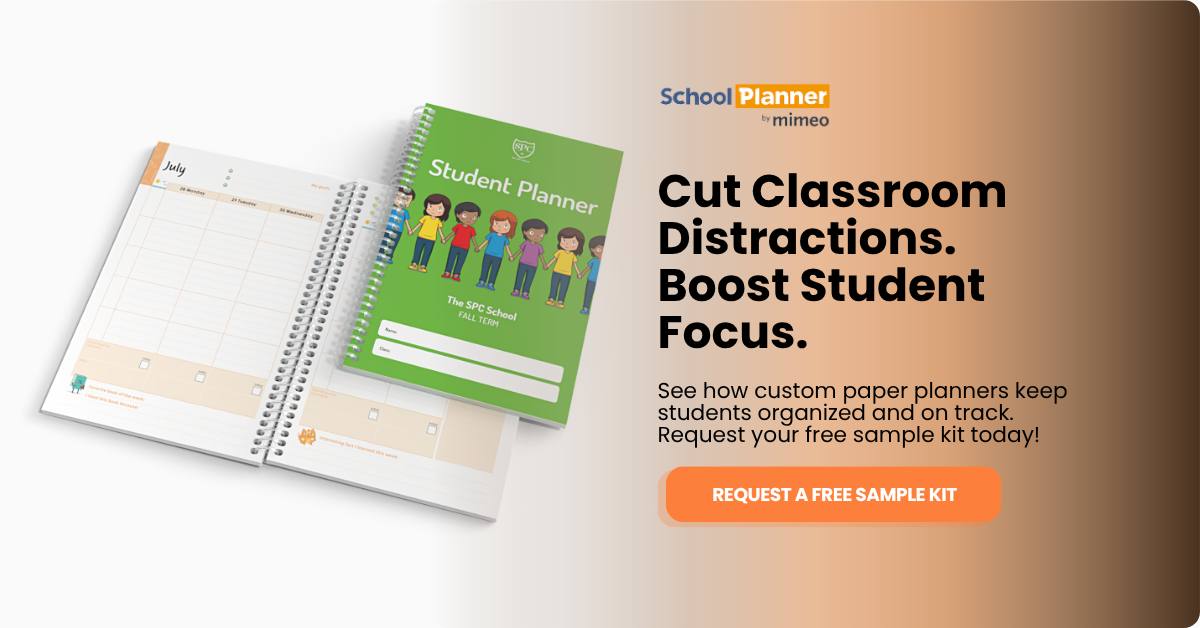
Creating a positive learning environment isn’t just about academics. For educators, teaching often goes beyond the textbook, with developing the whole person being just as important. And a classroom with clear and consistent expectations for behavior allows students to grow socially, emotionally, and academically.
As every teacher knows, though, behavior challenges are common in the classroom. These can quickly escalate into major disruptions to learning and lead to teacher burn-out. Fortunately, by intervening early and viewing behavioral problems as opportunities for growth, educators can bring a sense of community and calm back to the classroom.
Why Early Intervention Matters
Addressing classroom behavior challenges early prevents minor disruptions from escalating into major problems throughout the school year. Not only does this lead to better learning outcomes for students, but it’s also crucial for maintaining teachers’ well-being.
READ MORE: 5 Ways to Begin Empowering Teachers
By practicing proactive classroom management and addressing behavior early, teachers can help students develop the social and emotional skills necessary for academic success and create a positive learning environment.
This may look different depending on your students’ age and development, but the important thing is understanding what the disruptive behavior is communicating. This helps educators to respond appropriately, minimize disruptions in the classroom, and support students’ long-term growth.
Common Classroom Behavior Challenges Teachers Face
Teachers can face numerous behavioral challenges on any given day. A recent survey from the Pew Research Center found some of the most common classroom challenges reported by teachers to be: a lack of interest in learning (47%), being distracted by cellphones (33%), getting up and walking around without permission (21%), and disrespect toward the teacher (21%).

Other common classroom disruptions include:
- Talking out of turn
- Lack of focus
- Defiance
- Emotional outbursts
- Sleeping
- Not participating
- Tardiness
- Leaving class
- Absenteeism
Some of these classroom behavior challenges are more common at certain ages and grade levels. For example, high school students are more likely to be uninterested in learning or be distracted by their phones. Elementary students, however, are more likely to get up and walk around when they’re not supposed to or show disrespect toward their teachers.

Root Causes of Behavioral Issues
When dealing with classroom behavior challenges, it’s helpful to reframe “bad” behaviors in the classroom as skill gaps. Understanding student behavior and why it’s happening can help teachers get to the root of the problem. This way, instead of just managing behavior, educators can support students in developing the skills needed to correct the behavior.
So why do some students act out in class? The answer can be anything from learning differences or developmental needs to stress at home or even mental health problems.
Root Causes of Behavior Issues and Matching Interventions
| Root Cause | Recommended Intervention |
|---|---|
| Learning differences | Provide differentiated instruction tailored to strengths and needs |
| Developmental needs | Support with age-appropriate, scaffolded tasks |
| Stress at home | Build strong teacher-student relationships and provide a safe space |
| Mental health concerns | Partner with parents, counselors, and support staff early |
| Lack of social/self-regulation skills | Teach social-emotional learning (SEL), coping skills, and self-regulation techniques |
Experts at Child Mind Institute describe misbehavior as a symptom of underdeveloped skills. Students may lack social skills or the ability to self-regulate, or they may be stressed or struggling and not know how to express that feeling appropriately.
Before reacting to challenging behavior, teachers can practice empathy, digging into the “why” behind the behavior. By paying close attention, teachers may find the answers to important questions such as:
- What does this behavior communicate? (Possible answer: “I’m struggling with the lesson.” or “I’m overwhelmed.”)
- What is the purpose of it? (Possible answer: attention or a reaction from the teacher)
- Is there a pattern? (Possible answer: during math lessons or a particular activity)
Answering these questions is a critical step toward finding a solution to classroom behavior issues.
Classroom Behavior Management Strategies That Work
Many teachers find that classroom behavior management techniques should include both preventative strategies and responsive strategies. This approach helps to create and maintain a positive learning environment for students.
Preventative strategies for classroom management include:
- Establishing clear expectations. Rules should be specific and easy to understand. Involving students in setting classroom expectations can help build students’ confidence and a sense of community.
- Setting up consistent routines. The predictability and structure that routines provide help with easing anxiety, managing transitions, improving focus, and building independence in students.
- Building relationships. Getting to know students by learning about their lives—including interests, skills, and even concerns—helps to build trust. A positive relationship encourages students to speak up, ask questions, and engage with lessons.
- Using positive reinforcement. By offering praise and rewards, teachers can reinforce the behaviors that they want in the classroom. This can include verbal praise, earning special privileges, or tangible rewards.
- Planning engaging lessons. Varying instructional methods helps to keep students interested in the material and helps educators meet the needs of different learning styles.
Even with a proactive approach, disruptive behaviors will come up in the classroom. When they do, responsive classroom management strategies to use include:
- Redirecting behavior. For minor disruptions, teachers can use redirection to quickly and calmly bring students back on task. Explaining expectations clearly and respectfully are key.
- Enforcing logical consequences. Consequences should be directly linked to the student’s behavior, with the goal of teaching and guiding, not punishing. By enforcing reasonable and respectful consequences to misbehavior, students are empowered to take ownership of their actions.
- Using calm-down strategies. Creating a dedicated calm-down corner with sensory tools or toys can be effective, particularly for younger learners. Educators can teach (and model) calming skills like deep breathing, mindful movement, and positive self-talk.
- Involving the student in problem-solving. Teachers can work together with students to uncover the “why” behind an unwanted behavior. In doing so, teachers and students can then collaborate to find a solution to prevent classroom behavior challenges.
- Encouraging self-reflection. Giving students the time and space for self-reflection helps to build self-awareness and personal responsibility.
How Teachers Can Navigate Difficult Behavior in the Classroom
Effective classroom management is a great preventative strategy for minimizing disruptions and encouraging student engagement in the classroom. But even with the most thoughtful planning, behavioral difficulties will arise during the school year.
When this happens, the following steps are important to remember:
- Stay calm and professional. While it’s easy to feed off of others’ emotional energy, staying calm and professional is a critical first step in diffusing any situation. Using a calm voice and positive body language will help to prevent a disruption from escalating into something more.
- Focus on behavior, not labels. By practicing empathy, teachers can try to understand the reason behind unwanted behavior. Labeling a student as a “trouble-maker” or an action as “bad” classroom behavior leaves little room for growth. Instead, students should be empowered to make better choices.
- Use logical consequences and give choices. Just as logical consequences encourage students to take ownership of their actions, offering choices can give students a sense of control throughout their day. With so much of their day spent being told what to do, it can help when students feel that their opinions are heard and valued.
- Document patterns. Difficult classroom behaviors often follow a pattern, such as a student withdrawing in certain situations or having a meltdown at a specific time of day. By observing these patterns, educators can begin to understand the root cause and determine how they can better meet their students’ needs.
- Partner with parents and support staff. When classroom behavior challenges are the result of something more, such as learning difficulties, sensory issues, or mental health concerns, partnering with parents and support staff can help to ensure that all of a students’ needs are being met in the classroom. Parent-teacher communication is key to addressing additional needs early.
- Use classroom management tools. Organization in the classroom reduces chaos and creates a positive learning environment. Making use of teacher tools for classroom management, including visual schedules, school planners, and calendars, helps to promote independence and clear communication.

Creating a Positive Learning Environment Year Round
The best strategy for classroom behavior challenges is prevention.
With a proactive approach to classroom management, educators can build healthy relationships with students and create a positive learning environment Incorporating social-emotional learning in the classroom all year long helps to curb challenging behavior by fostering a respectful, supportive classroom culture.
Remember, behavior management isn’t about punishment; it’s about helping students to build the skills needed to make good choices.